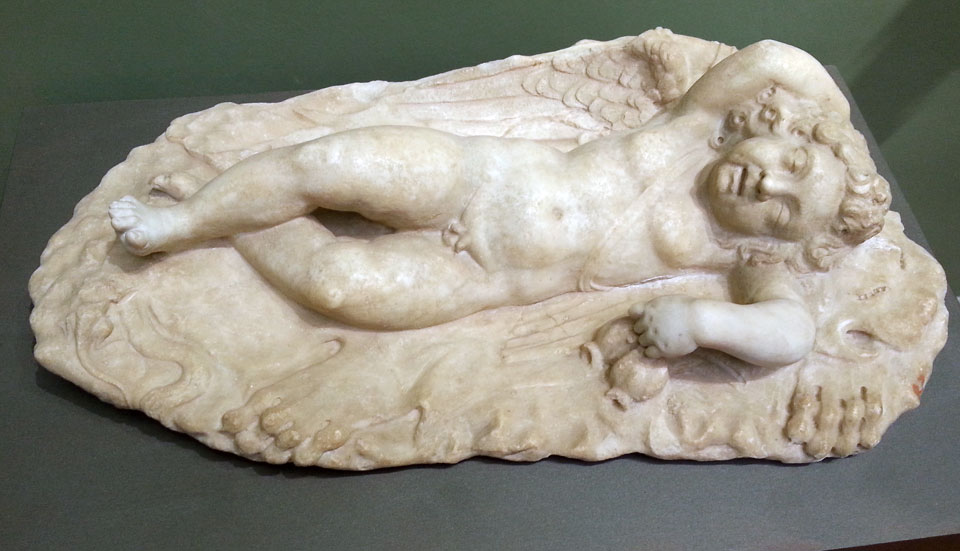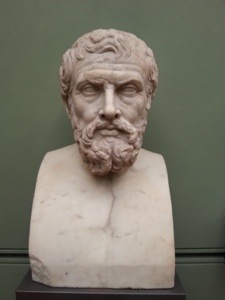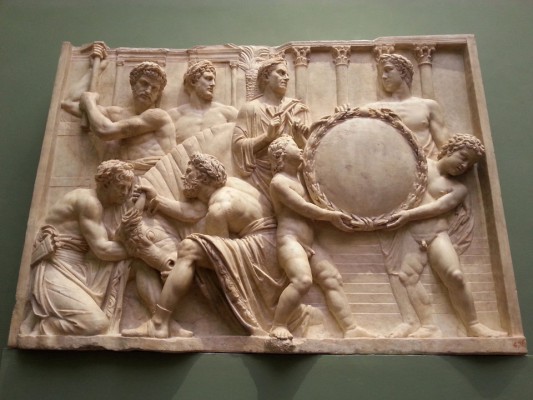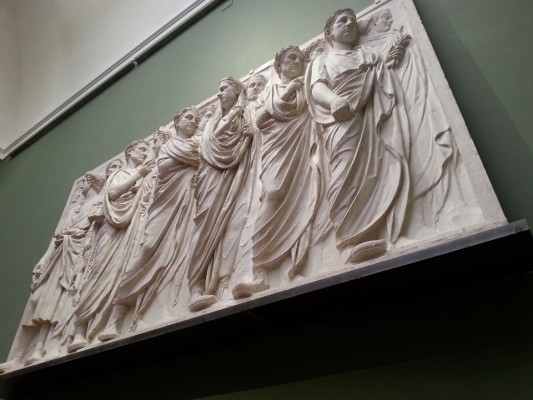Two New “Green” Rooms Open Up
2014

As part of the celebrations in commemoration of the 450th year since Michelangelo’s death, the Uffizi has opened up 2 more rooms under renovation for the last year as part of the New Uffizi project today February 17. A much more enjoyable way for all who visit the Uffizi to celebrate over a one-day commemorative event.
 The two new rooms, 33 and 34 located right before hall 35 dedicated to Michelangelo, contain sculptures selected to highlight the works of classical antiquity that influenced Michelangelo’s formation as an artist. The rooms, which used to house works by 16th century Tuscan and Lombard painters before restoration, have changed dramatically. The first, 33, is dedicated to Greek Portraits while the second houses works that evoke those classical figures present in the San Marco Garden owned by the Medici where the very young Michelangelo at 13 years old studied classical sculpture.
The two new rooms, 33 and 34 located right before hall 35 dedicated to Michelangelo, contain sculptures selected to highlight the works of classical antiquity that influenced Michelangelo’s formation as an artist. The rooms, which used to house works by 16th century Tuscan and Lombard painters before restoration, have changed dramatically. The first, 33, is dedicated to Greek Portraits while the second houses works that evoke those classical figures present in the San Marco Garden owned by the Medici where the very young Michelangelo at 13 years old studied classical sculpture.
The green used for the walls of the two rooms was inspired by the green backgrounds often used in Paolo Uccello’s work in the 15th century and serves as a sharp contrast with the white marble sculptures. In comparison to the statues presents in the Corridors of the Uffizi, this background invites viewers to stop and study the features, frowns, noses and expressions of the people and scenes portrayed. There are no cords that set you away from the sculptures in Room 33 so you can go right up to explore them from various angles.

These classical works inspired artists – and the Medici themselves – of the Renaissance as models of perfection and character in the neoclassical era. The Garden of San Marco, in particular, created by Lorenzo de Medici and dotted with statues, portraits, sarcophagi and more was set to inspire the sculptors of the time to relearn what the ancient Greeks were capable of doing and to replicate that skill. Room 34 houses that type of work that led to Michelangelo’s great sculptural masterpieces which today can be admired at the Galleria dell’Accademia with his David, Prisoners and St. Matthew, his Baccus at the Bargello and his magnificent sculptures in the New Sacristy within the Medici Chapels.








2 comments
Trackback e pingback
No trackback or pingback available for this article